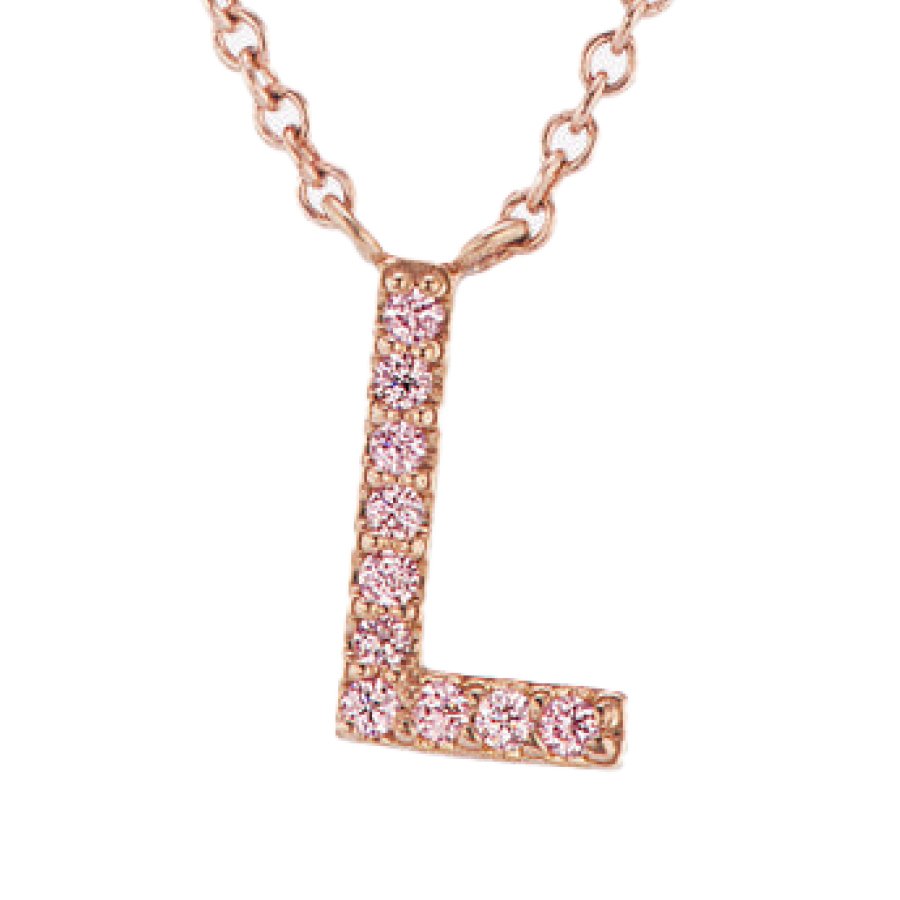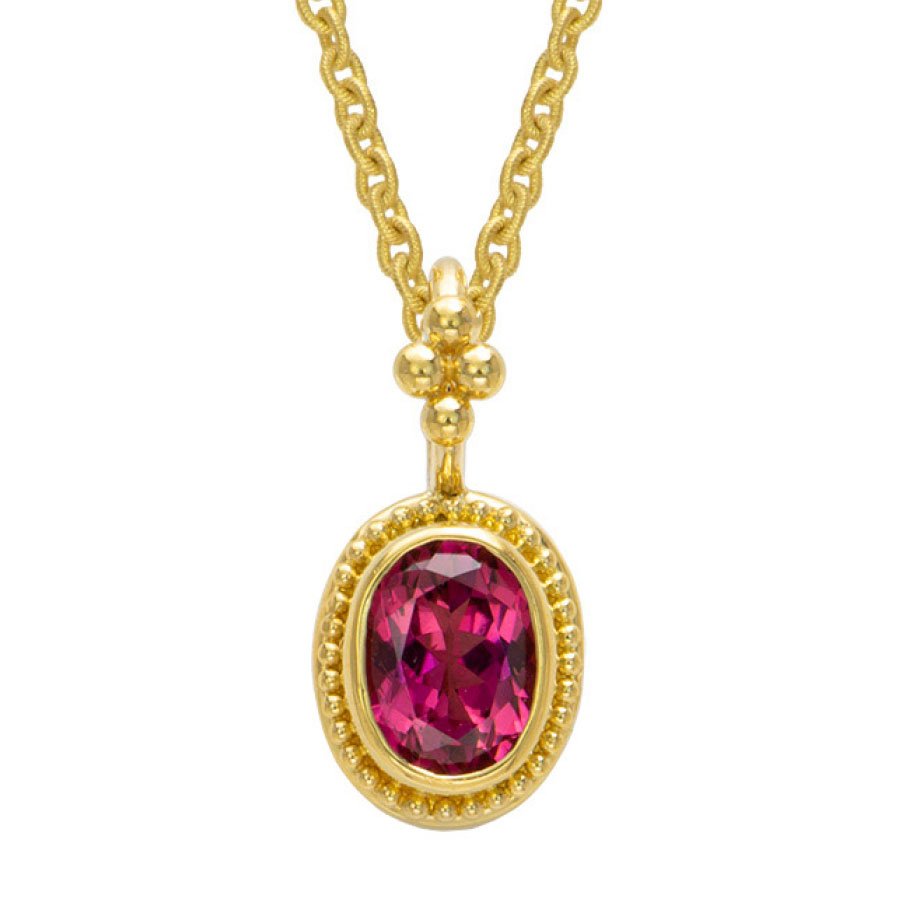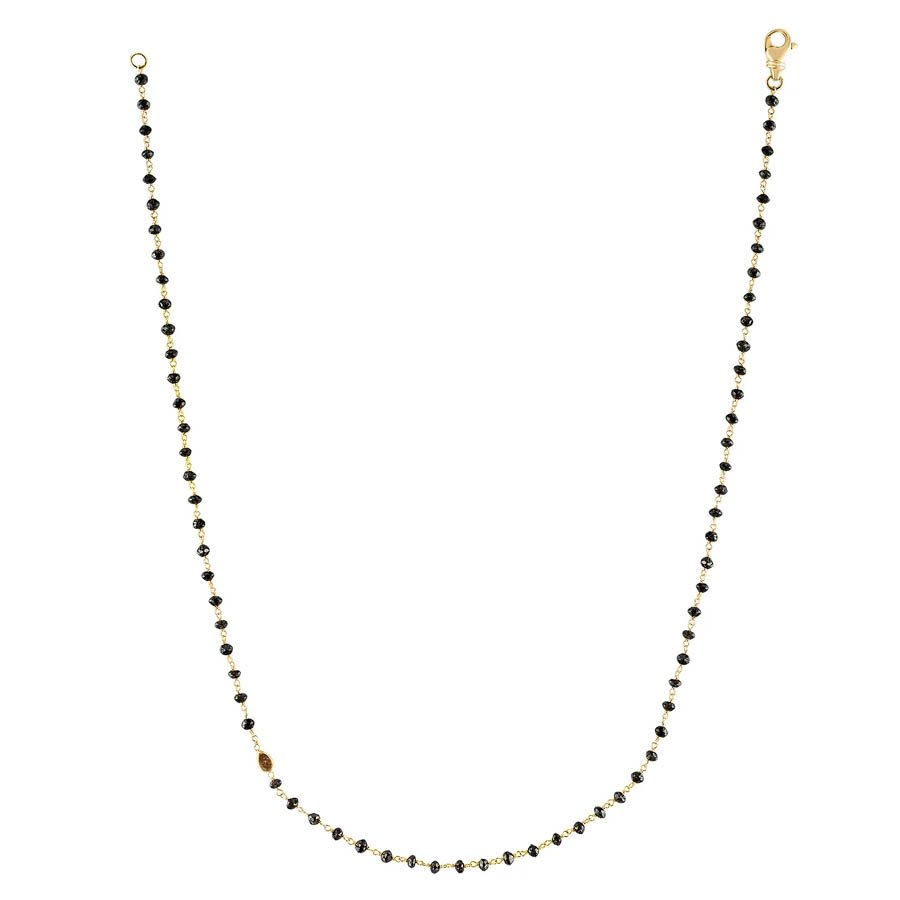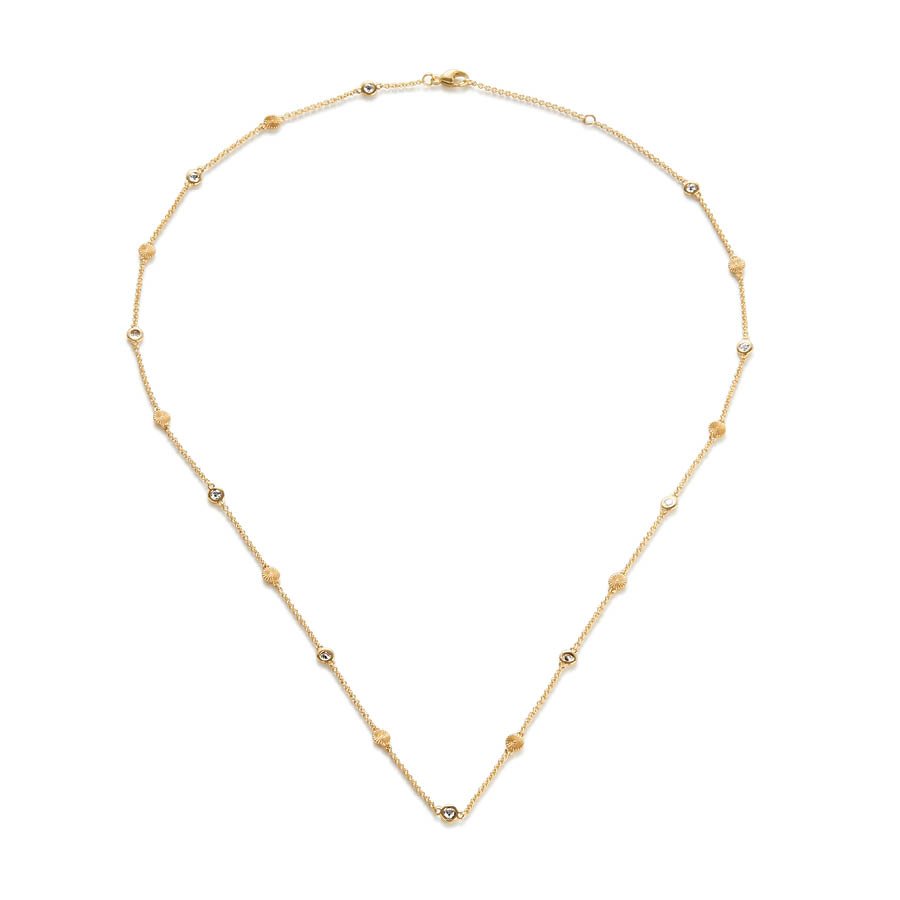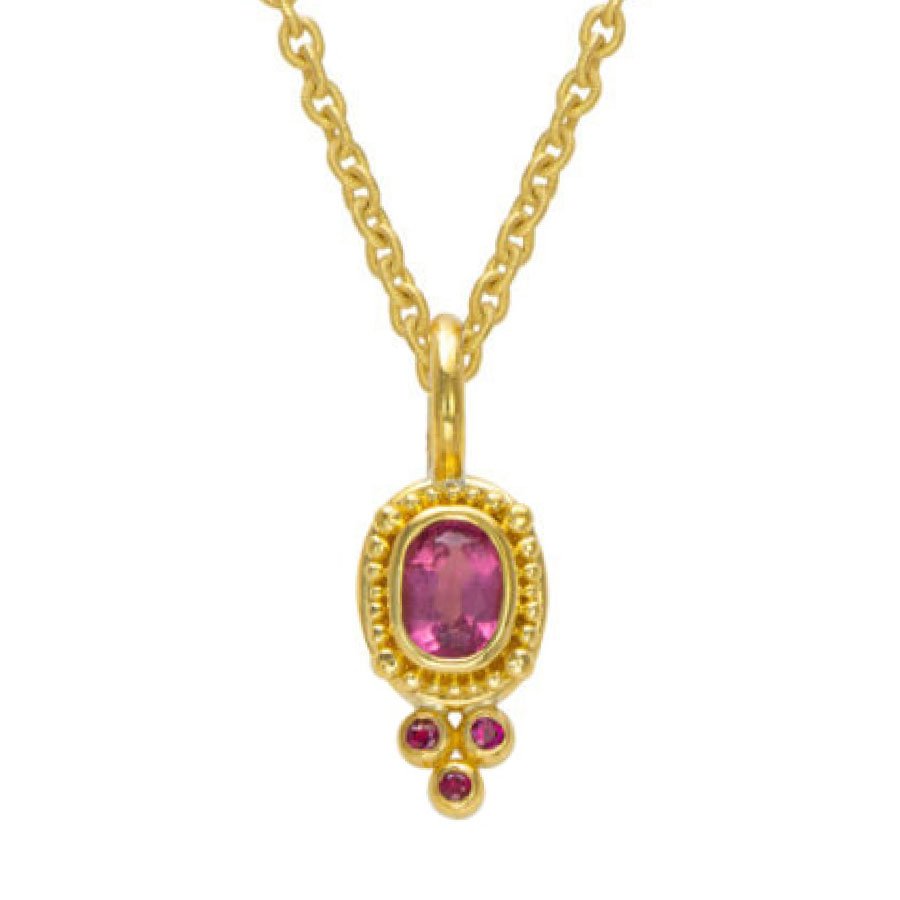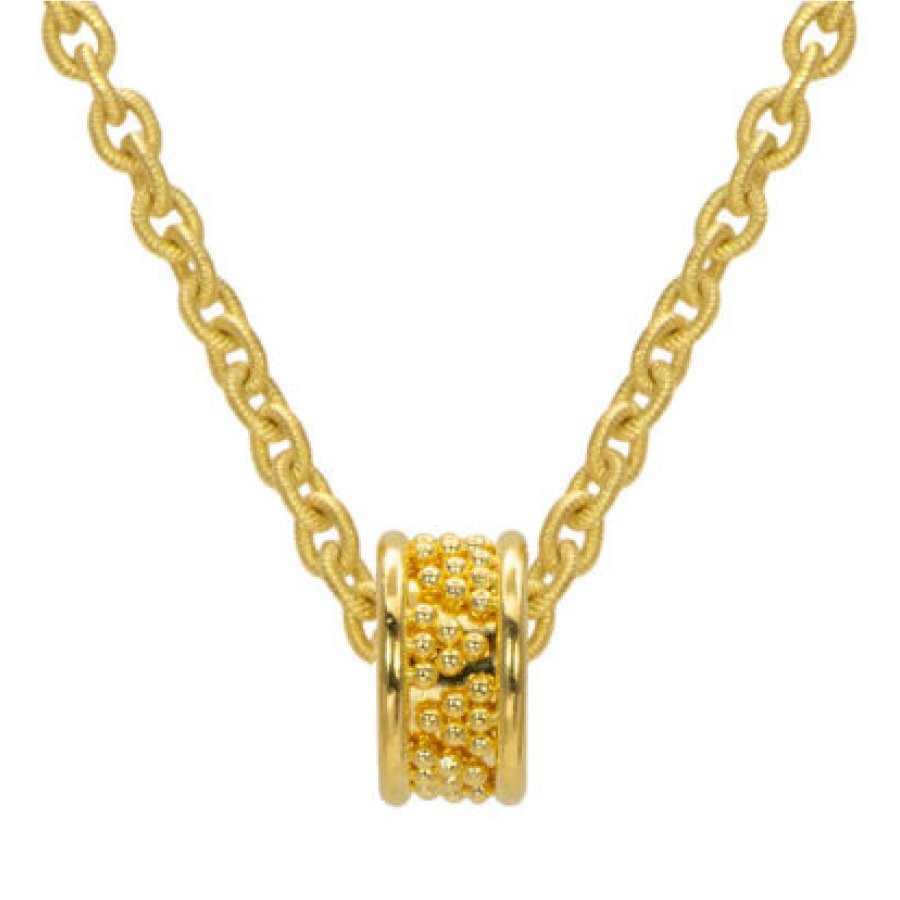3 Tips to Avoid Tangles and Knots with Layering Necklaces
Guide to Layering Necklaces Without Tangles
Here is a quick preview of what you will discover in how to layer necklaces:
Essential Layering Guidelines
As a private jewelry advisor, I’ve guided countless clients through the art of layering necklaces. While layering jewelry beautifully tells your personal story and expresses your unique style, nothing disrupts your carefully curated look like tangled chains!
Recently, a client came to me frustrated with her layered necklace collection constantly knotting. Through our consultation, we transformed her experience using these professional techniques I’m about to share with you.
Let’s explore each essential aspect of successful necklace layering, starting with when to wear your pieces.
Before you read any further, a best practice for fine jewelry of any kind (regardless of layering) is: when dressing, jewelry is the last thing on and first thing off.
TIP 1: WHEN TO WEAR… OR NOT TO WEAR
A universal rule of thumb for fine jewelry is to remove it (and store it in a secure place) before playing sports, swimming, bathing, and sleeping.
CLIENT SUCCESS STORY:
Stephanie came to me concerned about damaging her layered collection during her active lifestyle. We created a wearing strategy that protected her pieces while maintaining her signature style throughout the day.
• Remove jewelry before sleeping–consider blending it into your bedtime routine of washing your face and brushing your teeth.
• Take off pieces before swimming (pools and ocean as well as saunas and hot tubs).
• Store safely during exercise (including yoga and light workouts).
• Remove before showering or bathing.
TIP 2: THE POWER OF DIVERSITY
One way to avoid tangles is to choose necklaces that are a diversity of lengths, thicknesses, chains, and materials.
Be aware that softer gemstones, such as pearls and opals can be scratched by harder gemstones and metals.
If you have never considered lengths that are shorter or longer than the standard 16” and 18”, discover a guide to better understand the options and determine the right necklace length for you!
EXPERT GUIDANCE:
In my private consultations, we explore how different pieces work together:
• Shortest layer: 14-16 inches
• Middle layer: 18-20 inches
• Longest layer: 22-28 inches
MATERIAL COMPATIBILITY:
• Fine chains: under 1mm
• Medium chains: 1-2mm
• Statement pieces: over 2mm
TIP 3: UNITE YOUR LAYERS
Try connecting them together by way of attaching multiple necklaces to the same jump ring. This will make them less likely to tangle, given the clasps are bound together in one place.
Necklace spacers (also referred to as detanglers) may also help. That said if the necklaces are the same length, thickness, or material the outcome will be less effective.
ADVISOR TIP: During our styling sessions, we test different combinations to find the perfect balance between security and style. Professional-grade spacers can also make a difference in preventing tangles while maintaining your desired look.
NOTE: I do not advocate using magnetic layering necklace clasps, as they are not secure. In a single moment, your most treasured layering necklaces or family heirlooms can be lost without your notice.
IMPORTANT: Do not use baby powder or baby oil to untangle fine jewelry necklaces - it will dull the luster.
Now that you understand the fundamental techniques, let’s find your perfect layering style.
Find Your Perfect Layering Style
Before exploring our curated collection, take this quick style assessment to discover your ideal layering combination. This quiz incorporates the professional guidelines we just covered to match you with pieces that will work best for your lifestyle and preferences.
QUIZ: What layering necklace best suits your style?
Expert Resources
Have questions about your quiz results or layering in general?
Check out our FAQ section below.
Frequently Asked Questions
Q: How long can I safely wear layered necklaces?
A: With proper care, you can wear layered necklaces all day (12-14 hours). I advocate removing them before sleeping, showering, and exercising.
Q: Which necklace lengths work best for layering?
A: Start with a 16-inch choker or collar length, add an 18-inch for the middle layer, and finish with a 20-24-inch piece.
Q: Can I layer different metals together?
A: Yes! Modern styling that embraces mixing metals is one of my favorite looks. This encompasses your entire jewelry wardrobe. Some people prefer that each piece has a similar finish quality to prevent one metal from overshadowing another, but that is subjective.
Q: How do I store layered necklaces overnight?
A: Use individual soft pouches or a jewelry box with separate compartments to avoid damage to softer gemstones. Keep each piece flat and fastened to prevent tangling.
Understanding your jewelry’s physical properties is key to successful layering. Let’s explore why the Mohs scale matters for your jewelry collection.
UNDERSTANDING THE MOHS SCALE: A PROFESSIONAL GUIDE
As your jewelry advisor, let me explain why the Mohs scale is crucial for creating lasting layered combinations. This knowledge helps protect your jewelry investment and ensures your pieces work harmoniously together.
The Mohs scale of hardness is important to consider when choosing a particular stone for a particular kind of wear. It is the degree of mineral “hardness”, measured by the resistance which a smooth surface offers to abrasion: 1 (soft) to 10 (hard). For example, an 8 will scratch a gemstone that is a 7 or below.
Simply put, the softer the stone, the more careful you need to be about wearing that stone in jewelry that may be exposed to abrasion.
NOTE: You may want to think twice before wearing your family heirloom pearls stacked with other beaded gemstone necklaces or metal chains, as your pearls can be abraded and damage the nacre.
Ready to put this knowledge into practice? Explore our carefully curated collection of layering-friendly pieces below.
SHOP DESIGNER LAYERING NECKLACES
Each piece in our collection is selected for its layering compatibility and durability. Use the expert tips above to choose pieces that will work best together.
HAVE MORE QUESTIONS?
As your find jewelry guide, I can help you select layering necklaces that celebrate your story, amplify your style, and ensure you feel confident, seen, and powerful!
Looking for a deeper connection with your jewelry?
Discover the power of personalized gemstone selection through our Vedic Gem Salon experience.
ELEVATE YOUR LAYERING EXPERIENCE WITH VEDIC WISDOM
Beyond mastering the art of layering, discover the gemstones that resonate with your personal energy through our unique Vedic Gem Salon experience.
Introducing the Vedic Gem Salon to discover your most powerful gemstones with a Vedic astrological gemstone reading!
Together with a modern Vedic astrologer, we reveal your most effective gemstones to have in your jewelry wardrobe.
The private gem salon experience can be one-on-one or with an intimate group. Salons are perfect for milestones such as promotions or graduations, as well as celebratory occasions with your besties or family members!
Have a gemstone in mind already?
Let’s create a bespoke layering necklace with the gemstone of your choice!
Join our BRILLIANT community to receive:
• Weekly inspiration of intentional jewelry that tells your story
• Professional styling tips to ensure you feel confident
• Expert jewelry care reminders
• Early access to new pieces perfect for layering













